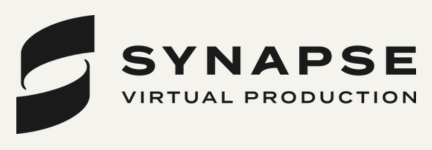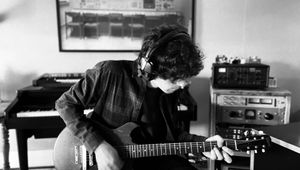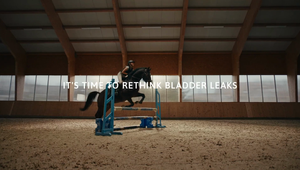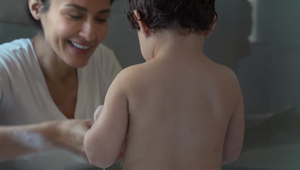
Uncommon London x Soundtree: How to Deliver Work That Gets Heard


Q> Music plays a powerful role in your work together. How do you use music to bring out emotion, and craft sound that makes people listen?
Luis Almau, composer, Soundtree> I’m very aware that the emotional impact of music is massively dependent on the context it’s in. So while the piece of music clearly has to pull its own weight, whether it ends up moving people or not, is in my opinion mosty to do with the idea, the creative team and their relationship with their client. It’s all about trust between agency and client, that’s the only way you’ll get something on air which is moving, interesting and daring.
Writing a piece of music which moves people is one of our jobs, but the bigger job I think is arriving at the concept and the approach, which together with the picture will make the piece undeniable. For that to be possible, you need true collaborators.
Henning Knoepfel, sound designer, Soundtree> In order to draw people in, you ultimately need to make the work believable which often enough comes from sounds that do not reflect reality. Listeners need to be able to understand what they’re hearing, particularly with sounds that are not seen. It is these off-screen sounds that can draw a wider context and help people make more sense of what they’re watching.
On the WWF project, the brief was very much in-your-face and hyperreal so I incorporated a soundscape that makes people jump up and be scared into action. If sound is too abstract you run the risk of alienating your listeners and they may need to listen to it a few times to understand it - much like looking at abstract art.
Most commonly, people talk about music being the emotion and sound being the action, but it totally depends on the type of sound. For example, while vocals can bring out lots of emotions such as empathy or shock, a simple squeaky door could cause you to feel scared and frightened.
Q> How early in the process should music and sound be considered?
Nils> Very early. I know everyone says that but we really do abide by it. In the brief, we’ll bring it in and everyone will tell us how it makes them feel. When we talk about music we’re talking about an experience we’re trying to conjure.
Italian director, Paolo Sorentino is absolutely blinding at music. Everyone says how his films look amazing and they do, but he completely gets that he has a brief moment to create a world view. He’ll show one shot and play one track and it will hit you. And that’s what we try and do really. If you can keep that in mind and, most importantly, not forget the part about how you feel, that’s how you end up with special work.
Luis Almau, composer, Soundtree> When it feels like it’s too early to talk about music, that’s probably the perfect time. Ideas are still being formed, able to be influenced or challenged. I also find thinking about music before picture very freeing, as I’m not having to deal with the logistics of sync. I wrote the track for ITV Television this way, then Billy Boyd Cape (director) took it into the edit and worked with it.
Talking early really gives us a better understanding of where people’s heads are at, what their tastes are, and what their journey has been so far on any particular project. It’s very hard to get that same understanding over a couple of days and with a locked, unmovable edit.
Nils> Some people have gotten into this weird habit of filming an ad, cutting it, and THEN asking what track they should put on it. It’s bizarre. I just can’t even conceive of that.
If you look at the work we’ve put out, you’ll see that the cut moves around the music and the sound. We would often do it the other way up - cutting edits that just have the sound on them and building up from that. The ITV project for example, was built very much like that. And the Guardian job as well. We found this track that was simply all about hopelessness and built everything else up from there.
Q> When Uncommon look for partners to collaborate with on sound and music, what are you looking for?
Nils> Sound, in our game, can actually become a bit of a job that people do. A little bit monotonous. And that’s very different to how a director or a creative would see the potential of sound. So you are looking for people who share that vision, and they generally tend to be those at the upper echelons of the industry. It’s why you see so many people refer to Hans Zimmer so often. There’s a flavour and a remarkability to his work, so the trick is in finding people who are dissatisfied with just being a tool or a service. You want to find people who are really looking to make something, who have that spirit.
I love working with Soundtree because they totally get it. When you walk into their studios there is a spirit of something far greater than a load of people making adverts. We are never ever going for the track that just ‘fits’.
Q> What’s your approach to your projects and how do you find inspiration?
Nils> When brainstorming we think about the point of the idea; how we’re going to make something naturally famous; and then lastly we consider how we’re going to leave people feeling. Lots of companies talk about fame and culture but we obsess over how we leave people feeling. That’s almost more powerful than what you say sometimes.
Henning> My first approach when designing sound is to come up with a structure and what kind of music it has to play along with. We have such close collaborations at Soundtree that we always discuss the full soundtrack, whether it is music or sound that should lead at a particular scene or whether certain sounds could clash with music or dialogue.
When I’m creating sound, I try not to rely too heavily on research as it can lead to emulation. Sometimes it can even inhibit creativity. I find much of my inspiration in tranquil places, where I can clear my mind and give it the space to think, i.e. I need silence in order to hear the sound in my head.
Luis> One of the things I love about working at Soundtree is being able to pop into different studios and bounce ideas off other people in the team. Composers often have a lonely existence, working on their own a lot, so there’s something really special about having a supportive team around you.
In terms of inspiration, I find it very helpful to think away from the computer or any musical instrument. It frees me from my own technical shortcomings and my own preconceptions. So for instance, if I pick up a guitar there’s a kind of riff that I’ll come up with because of my history with the instrument, but if I think up a melody away from it then it has the potential to be a much more original idea.
Q> What can sound offer that visuals can’t?
Luis> A lot of people say music is subjective but I don’t think it is really. Music in my experience adds the definitive emotion to a visual. The same picture set to a completely different soundscape will take on a whole new meaning.
Henning> Sound can definitely give different meaning to an image. You can tone it to make things have a scary undertone or a joyful one for example. You can also contextualise an image through sound and give clues to the environment. Throwing in something unusual in there can create ambiguity and mystery making the viewer curious.
You can also extend the frame with all sorts of information about things off-screen such as crickets for cues on time of day and playing with acoustics to hint at the type of room you’re in. Sound gives you added value.
Q> A lot of your work together uses silence brilliantly. Why do you think silence can be so powerful?
Henning> The pause is as important as the note. Designing sound means that you’re also designing silence before and after it, if you’re speaking abstractly. The slamming of a door will feel so much louder if you put silence before it - the contrast really helps.
Nils> It reminds me of a David Carson quote: “The magazine cover you notice most is the one with the least on it.” All the magazines are trying to cram as much shit as they can on the cover, and I guess the same can be said of advertising in some ways.
If you look at a lot of our work there’s often a kind of ‘break’ moment, an inflection or a moment where you are challenged as a viewer somehow. We’ll make a moment that is either totally silent or perhaps rests far too long on one note because that creates a sense that something isn’t right.
Q> And is that how you ultimately capture attention?
Nils> Yes. And it’s how you retain it as well, by the way. A thing we realised early was to try and leave a hole in your idea. Because viewers are now so aware of the mechanics of advertising that it's possible to send them to sleep with a good idea, in some cases. So finding a way to keep it abrasive and jar people is important, whether it’s a change of music, or narrative or whatever it may be.















